A number of terrorist attacks on hotels in the last 12 months have highlighted the vulnerability of the hospitality sector, making security improvements a top priority. A&S looks at how security technologies help hotels fend off potential threats and enhance guest experience.
A number of terrorist attacks on hotels in the last 12 months have highlighted the vulnerability of the hospitality sector, making security improvements a top priority. A&S looks at how security technologies help hotels fend off potential threats and enhance guest experience.
Global income from international tourism topped US$1.1 trillion in 2008 or roughly $3 billion a day, according to the United Nations World Tourism Organization (UNWTO). Although tourism declined with the slow economy and H1N1 pandemic since September 2008, the latest UNWTO barometer estimates international tourist arrivals to growing 1 to 3 percent in 2010.
Guests expect good service at hotels. While comfort and satisfaction are vital for attracting guests, security has become a requirement. “People can choose locations and star ratings of a hotel, but not the level of security protection,” said Dr. John Wyatt, Technical Director of SDS Group. “Recent reports show that security has been rated by more than 60 percent of travelers as the most important factor for accommodation selection.”
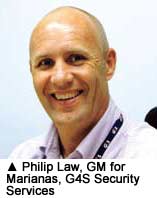 Hotel threats vary by region, where country profile, political stability and terrorist activities should be considered. “The measures taken to guard against threats are more to do with perimeter and public space management,” said David Rees, Regional Manager for APAC, Salto Systems. “The primary concerns are usually guest safety and theft prevention.”
Hotel threats vary by region, where country profile, political stability and terrorist activities should be considered. “The measures taken to guard against threats are more to do with perimeter and public space management,” said David Rees, Regional Manager for APAC, Salto Systems. “The primary concerns are usually guest safety and theft prevention.”
Large numbers of visitors and staff mean heightened risk from daily operations. “External personnel, including deliveries and services, are often able to access sensitive areas inside hotels without security checks,” said Alex Zarrabi, GM for the Middle East, IndigoVision.
“Outsiders like suppliers and contractors can be a real threat,” echoed Indra Komari, Business Line Manager, Retail and Site Protection for Indonesia, Gunnebo. “In Indonsia, four- and five-star hotels are tightening security checks to restrict access.”
 Rules and Regulations
Rules and Regulations
There are no authorities overseeing security standards for the hospitality industry. One-month video archiving is common, but it can range from 14 days to three months, with recording varying at 5 to 12.5 fps in CIF to D1. Live monitoring is sometimes demanded, and recording at 25 fps in D1 resolution is restricted to premium hotels. Video privacy zones can be applied at ATMs to prevent operators from seeing guest PINs, Zarrabi added.
Hotels in the United Arab Emirates must abide by police mandates. “Frame rates may deviate, but continuous recording at 5 fps in 2CIF for 31 days and local real-time monitoring are becoming minimum requirements,” said Matthew Terrey, Sales Director for the Middle East, March Networks.
 “The Ministry of Home Affairs of Singapore recently enacted the SS545 Standard, aiming to encourage hotels to strengthen security,” said Terence Lee, Director of Product Management for APAC, Ingersoll Rand Security Technologies.
“The Ministry of Home Affairs of Singapore recently enacted the SS545 Standard, aiming to encourage hotels to strengthen security,” said Terence Lee, Director of Product Management for APAC, Ingersoll Rand Security Technologies.
“In India, a security bill is being discussed to regulate properties with more than 1,000 footfalls as high-footfall zones,” said Shakti Kumar Leekha, GM of Systems and Products India, Johnson Controls.
Solutions
Hotels are dynamic, with staff, guests and guards coming and going 24-7. A wide range of surveillance products are needed for full coverage.
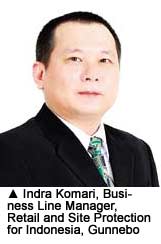 Video footage is accessible to receptionists, security staff and designated administrative personnel. Live monitoring of main entrances, back doors and luggage areas is common for economy and luxury hotels alike, said Iain Cameron, MD for the U.K., Mirasys.
Video footage is accessible to receptionists, security staff and designated administrative personnel. Live monitoring of main entrances, back doors and luggage areas is common for economy and luxury hotels alike, said Iain Cameron, MD for the U.K., Mirasys.
Discretion is the next priority. “Identifying potential threats in public areas with high human traffic without disturbing guests poses challenges,” said Roger Tsang, District Manager for Hong Kong, Macau and Taiwan, ADT Security.
“People have become more accustomed to baggage searches and walk-through detectors, making discretion less of a concern,” said Philip Law, GM for Marianas, G4S Security Services.
Perimeter and Entrances
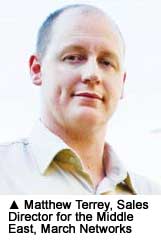 At some resorts or large hotels, security checks start from gates hundreds of feet away from building entrances. Tire killers, roadblocks, portable explosive detectors and under-vehicle surveillance systems are popular security practices in Indonesia, said Vincentius Liong, Director of Building Management System and Security for Indonesia, Schneider Electric. X-ray machines, handheld and walk-through metal and explosive detectors are used high-occupancy, five-star hotels.
At some resorts or large hotels, security checks start from gates hundreds of feet away from building entrances. Tire killers, roadblocks, portable explosive detectors and under-vehicle surveillance systems are popular security practices in Indonesia, said Vincentius Liong, Director of Building Management System and Security for Indonesia, Schneider Electric. X-ray machines, handheld and walk-through metal and explosive detectors are used high-occupancy, five-star hotels.
Implementations of barriers, bollards and vehicle controls are now at least 25 meters from the main structure, Wyatt added.
Deploying video analytics for better customer experience is increasing. “Identifying preregistered, regular or high-profile guests at the gate allows customized services to be in place early,” said Francois Malan, Technical Director of Camsecure.
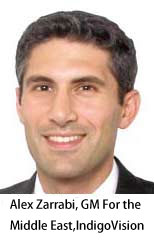 Maintaining good perimeter protection is critical. “IR technology is useful in screening intrusions before they turn into actual threats,” said Alfonso Caprile, Sales and Export Manager, Bunker Seguridad Electrónica. “Long-range coverage, IP ratings and a low false-alarm rate are key factors when considering perimeter systems.”
Maintaining good perimeter protection is critical. “IR technology is useful in screening intrusions before they turn into actual threats,” said Alfonso Caprile, Sales and Export Manager, Bunker Seguridad Electrónica. “Long-range coverage, IP ratings and a low false-alarm rate are key factors when considering perimeter systems.”
“Main access points are usually heavily guarded, together with video surveillance and access control devices,” Malan said.
High-performance video surveillance systems, including megapixel and HD cameras, WDR capabilities and video analytics, help monitor the front entrances, while access systems control traffic in the back, said Tsang.
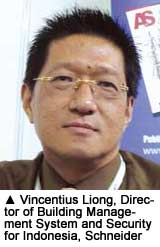 Public Areas
Public Areas
Reception counters, lobbies and restaurants are open to the public with no identification checks, making them susceptible to malicious acts. Megapixel and HD cameras can cover wide areas with heavy traffic to identify threats. “The latest trend is to incorporate facial recognition,” Zarrabi said. “Cameras are placed at strategic positions, such as reception counters where people stand still, for this purpose, to maximize the recognition rate.”
Day/night cameras with IR illuminators are employed to capture license plates and faces at gates or parking entrances, Liong said.
While surveillance at high-traffic public areas is more noticeable as a visual deterrent, video equipment monitoring hallways tends to be more discreet, Cameron said.
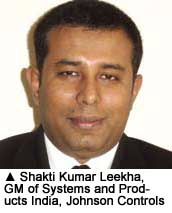 Offices and Guest Rooms
Offices and Guest Rooms
Staff areas — IT rooms, vaults, and command and control centers — are restricted with access control mechanisms with layers of authorization to validate entries and exits, Tsang said.

“Key management systems help protect valuable assets and establish accountability by recording when the key was removed and who removed it,” said Fernando Pires, VP of Sales and Marketing, Morse Watchmans. “Integration with physical security systems and business operation systems allows for stringent risk management.”
Guest rooms are managed by dedicated locking systems, separated from fire, video surveillance, access control and HVAC systems, noted Lee. VIP suites take clientele profiles into consideration and require stricter control, Leekha said.
With cards, most hoteliers still adopt contact ones for room keys, but contactless smart card technology is gaining ground.
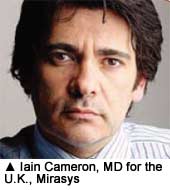 Integration and Coordination
Integration and Coordination
Seldom are hotels designed with security in mind, and integration is not typically of concern. Security and building management systems are mostly installed as separate systems by different contractors due to budgetary constraints, said Komari.
Although some experts are aware of data protection solutions, acceptance for integrated systems is slow, and installations are evaluated case by case, said Terrey.
To enhance the guest experience, inquiries have grown for combining elevator  control, cashless vending and room cards, said Komari.
control, cashless vending and room cards, said Komari.
IP integration simplifies energy efficiency and building automation with more integrated building management, HVAC and security system, Liong said.
An effective security system requires not just hardware integration, but also personnel coordination. “Surveillance is futile without the capability to react,” noted Wyatt. “Contingency planning and crisis response are urgently needed.”

 Challenges
Challenges
“The main challenge lies within projects, which are usually divided into phases and commissioned at different times,” Tsang said.
New mandates and tightened regulations mean additional costs to hotel owners for replacing legacy systems, said Zarrabi.
To create a better synergy between technology and manpower, staff training and security awareness building are a must, Leekha added.
Growing applications are in risk reduction and threat prevention with real-time alerts. Demand for higher resolution for video analytics, such as people counting and parking management, is on the rise, said Tsang.
Guest experience and comfort still come first. Enhanced room automation is made available through the integration of the locking system and room management system, Rees said.